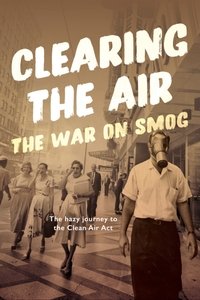

In July 1943, dark, smoky clouds suddenly descended over Los Angeles, causing residents to complain of burning eyes, nausea, and difficulty breathing. People couldn’t see across the street and visibility was so bad that cars crashed. With World War II raging, many feared a chemical attack by the Japanese, but it soon became evident that no foreign enemy was to blame. The waves of pollution called “smog” — a combination of “smoke” and “fog” — continued and the cause remained a mystery. It was the beginning of an epic struggle for clean air involving years of scientific investigation and civic pressure, bringing together people across ideological divides in a remarkable example of bipartisanship. Their work would lead to the creation of the Environmental Protection Agency and the Clean Air Act, which have had an enduring effect on the quality of air Americans breathe.

